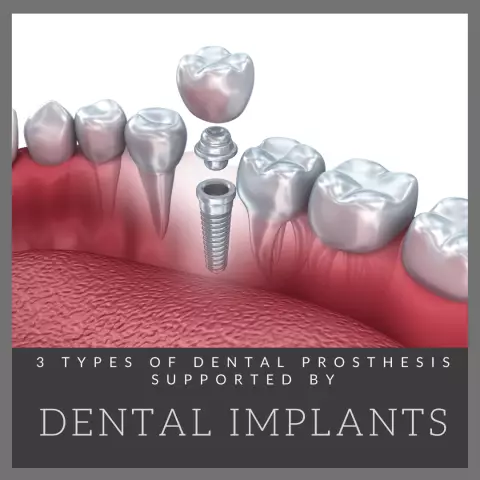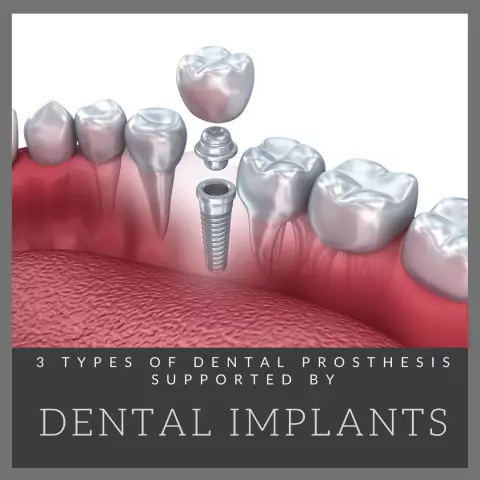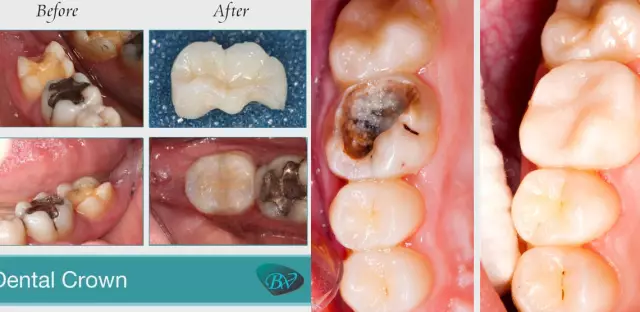- Author Rachel Wainwright [email protected].
- Public 2023-12-15 07:39.
- Last modified 2025-11-02 20:14.
Dental crown prosthetics

Prosthetics with dental crowns is one of the oldest, but to this day, it has not lost its relevance and reliable methods of dental prosthetics. The first textbooks on dental prosthetics that have been discovered date back to the era of Ancient Rome, and the skulls found with traces of denture replacement with dentures indicate that this art was applied already in the 6th century BC.
Dental prosthetics using dental crowns allows you to save a tooth from inevitable destruction when it is dead, that is, the pulp is removed from it, which is the neurovascular bundle feeding the dental tissue. A tooth covered with a crown can be preserved under it for tens of years, of course, with high-quality manufacturing of crowns and the absence of degenerative diseases of the dental system, such as periodontal disease.
Dental crowns are a kind of cap that is put on the tooth. In order for the tooth not to stand out from the dentition, it is reduced by cutting off the enamel and part of the dentin by the thickness of the dental crown. The methods of making dental crowns used today allow them to be made so precisely that they completely repeat the shape of the tooth, and, if desired, its color.
Dental crowns can be made of various materials, the most often used are metal and metal-ceramic, less often metal-plastic. Metal crowns are made of white (damask) or yellow (damask, gold) metal, at the request of the patient. Gold, which was previously widely used for the manufacture of dental crowns, is now used less and less often, since, despite a number of advantages, it has two significant drawbacks: low strength of the crown, explained by the softness of gold, and extremely low aesthetics, as well as crowns made of any other metal.
Therefore, dental crowns made of metal are currently used only on those teeth that are not part of the smile line. Metal-ceramic dental crowns meet aesthetic requirements to a much greater extent. In

this case, a thin cap is made of metal, put on the tooth, the metal is covered with ceramics on top. The color of the ceramic coating is selected according to the color of the patient's own teeth, the shape is given the same as a healthy tooth. A tooth covered with such a crown cannot be distinguished from a real one by a layman.
Dental crowns are used not only as stand-alone dentures, but also as support for bridges. Bridge abutments can also be made completely invisible.
Found a mistake in the text? Select it and press Ctrl + Enter.






